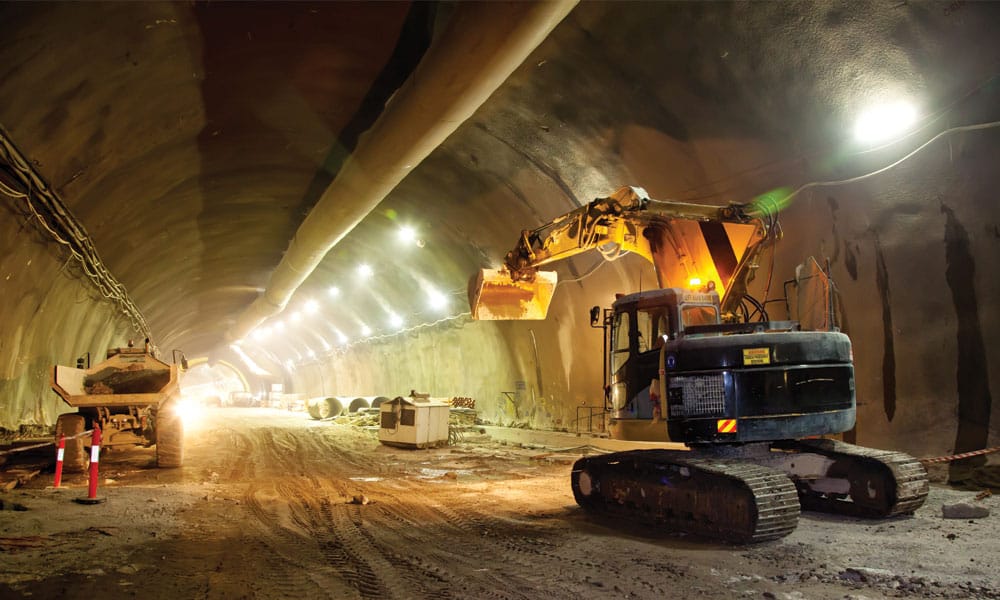The Influence of Geotheta on Improving Soil Stability and Architectural Honesty
Browsing Geotechnical Providers: The Value of Geotechnical Information, Dirt Compaction Testing, and Sidewalk Design in Ensuring Structural Stability
Geotechnical solutions, including the production of geotechnical reports, carrying out dirt compaction screening, and thorough pavement design, serve as the keystone of making certain architectural stability. geotheta. These vital parts not just lay the groundwork for effective job execution yet additionally alleviate prospective threats that could endanger the stability and longevity of a building job.
Importance of Geotechnical Reports
Geotechnical reports play an essential duty in offering comprehensive insights into the dirt and rock problems of a site, crucial for ensuring the architectural honesty of building projects. These reports are a basic part of the preliminary site investigation process, providing beneficial info that influences the style, building and construction methods, and total feasibility of a task. By analyzing dirt make-up, security, and potential threats such as landslides or sinkholes, geotechnical reports enable designers to make enlightened decisions regarding structure design and construction techniques.
Moreover, geotechnical reports aid in danger analysis and mitigation methods, helping project stakeholders recognize the potential challenges that might develop throughout building. Via complete assessment and interpretation of geotechnical information, engineers can develop options to address site-specific issues, ensuring the lasting stability and security of the framework. Eventually, the detailed nature of geotechnical reports acts as a crucial structure for successful project planning and implementation, reducing dangers and boosting overall job end results.

Function of Dirt Compaction Testing
Exactly how crucial is the analysis of dirt compaction via screening for guaranteeing the security and long life of building and construction tasks? Dirt compaction screening plays an essential function in the building industry by guaranteeing that the soil underneath a framework is appropriately compressed to protect against and support the desired load negotiation (geotheta). Appropriately compacted dirt offers a secure foundation for buildings, roads, and various other structures, minimizing the risk of architectural failure and costly repair services in the future
Dirt compaction testing includes measuring the density of the soil and comparing it to the maximum thickness achievable for that particular dirt type. If the dirt has been compacted completely to support the scheduled structure, this aids designers determine. By performing soil compaction tests during building, designers can identify any areas that call for additional compaction and take restorative actions before proceeding with more building and construction.
Importance of Pavement Style
Evaluating soil compaction via testing not just guarantees the stability and longevity of building and construction jobs however likewise lays a critical foundation for efficient sidewalk layout. Pavement style is a crucial facet of building jobs as it straight influences the durability and efficiency of roadways, auto parking whole lots, and various other structures subjected to vehicular or foot web traffic. Proper sidewalk design takes into consideration aspects such as traffic tons, environmental conditions, soil characteristics, and product properties to create a robust and lasting surface. By including data from dirt compaction tests, engineers can establish the proper thickness, materials, and layering for the sidewalk to hold up against awaited tensions and maintain structural honesty in time. Furthermore, pavement design affects drainage patterns, surface area rubbing, and overall safety for customers. With precise planning and analysis, geotechnical engineers can optimize pavement layouts to satisfy certain task requirements, making certain smooth transportation routes and reducing upkeep costs over time.
Making Certain Architectural Honesty
These records offer important info on soil make-up, stability, and prospective dangers, assisting in notified decision-making throughout the layout and building stages. Additionally, performing extensive soil compaction testing is vital to ensure that the soil below sidewalks or foundations is properly compressed to support the designated loads and protect against settlement issues.
Additionally, carrying out durable pavement style methods is important for making sure the architectural integrity of roadways, parking area, and various other smooth surfaces. Correct pavement style takes into consideration elements such as traffic quantity, ecological problems, and soil attributes to create safe and long lasting transport facilities. By sticking to these practices and making use of geotechnical services efficiently, construction jobs can boost their architectural stability, lessen risks of failure, and ensure the long-term efficiency of the constructed environment.
Protecting Against Risks
In light of the crucial significance placed on ensuring architectural integrity via precise interest to product selection and soil testing, safeguarding versus risks comes to be extremely important in maintaining the stability and longevity of building projects. Dangers in building jobs can stem from different resources, including natural disasters, dirt instability, or style problems.
Moreover, establishing contingency plans and implementing robust monitoring systems can aid alleviate unexpected dangers that may develop throughout construction. Regular evaluations and high quality control steps must be accomplished to ensure that materials are made use of in accordance with specifications and that building methods abide by sector standards. By proactively identifying and resolving prospective threats, building and construction projects can improve their strength and lessen the chance of structural failings, eventually making sure the safety and security and durability of the constructed environment.
Final Thought

Soil compaction screening plays an essential function in the building market by ensuring that the soil beneath a framework is appropriately compressed to sustain the intended tons and stop settlement.Dirt compaction testing involves gauging the thickness of the soil and contrasting it to the maximum density possible for that particular dirt type (geotheta). By conducting soil compaction tests throughout building and construction, engineers can identify any areas that geotheta call for additional compaction and take corrective actions before continuing with more building and construction
In addition, performing extensive soil compaction screening is critical to ensure that the dirt below pavements or foundations is properly compacted to support the designated tons and avoid negotiation problems.
In conclusion, geotechnical reports, dirt compaction screening, and sidewalk layout play critical functions in guaranteeing the architectural integrity of building and construction jobs.